This simple recipe produces tender, melt-in-your-mouth beef tongue. The mushroom-onion sauce is optional but delicious and highly recommended.
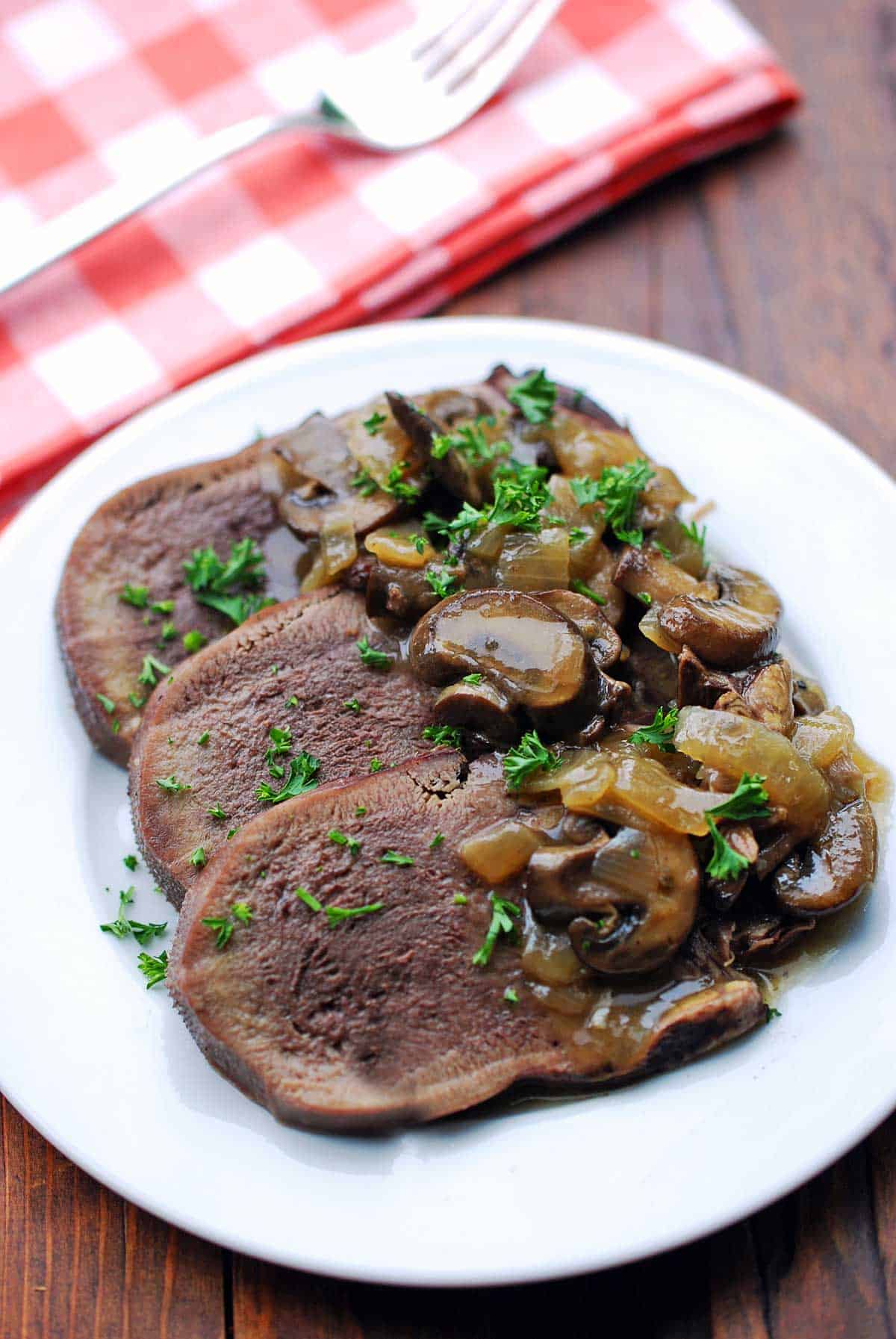
Nose-to-tail eating is the ethical way to consume meat, and cow tongue makes it very palatable indeed. It's wonderfully flavorful and tender, and surprisingly easy to make. I learned how to cook tongue from my Dad, and my friend Irina taught me to add a rich onion-mushroom sauce. This is a large piece of meat, so you'll probably have plenty of leftovers, but no worries - they are really good, whether gently reheated or served cold.
Ingredients
See the recipe card for exact measurements. Here are my comments on the ingredients.
For Cooking the Tongue:
- Beef tongue: It's not usually available in U.S. supermarkets, so I special-order it at Whole Foods Market (some of their stores carry frozen tongues). You can also order it online at Wild Fork Foods or U.S. Wellness Meats. If you're lucky enough to have a Hispanic market nearby, you should be able to find it there.
- To season: Black peppercorns, dried bay leaves, and whole allspice.
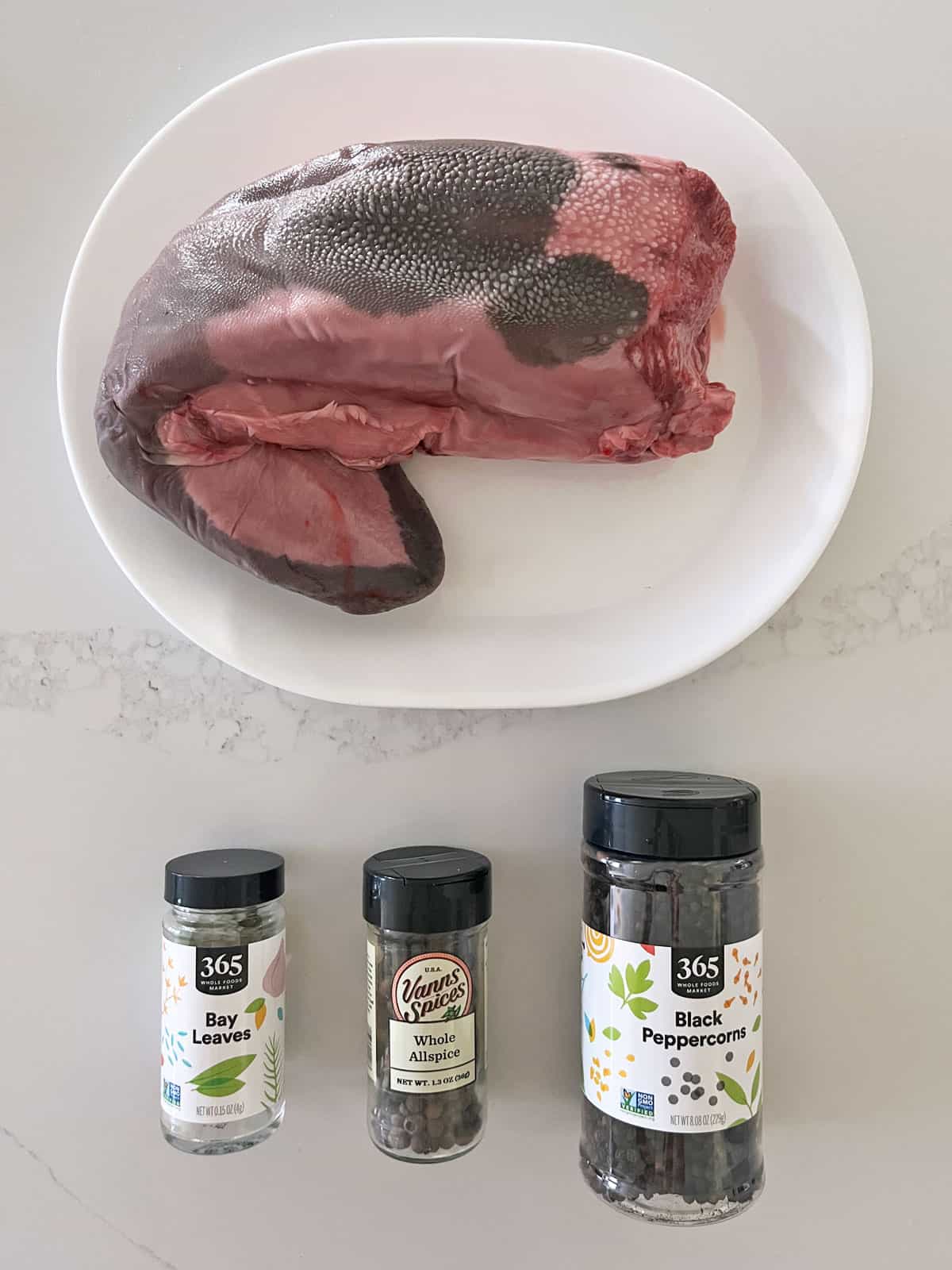
For the Sauce:
- Butter: I typically use unsalted butter, but it's fine to use salted butter.
- Onions and mushrooms: To make life easy, you can buy pre-chopped onions and sliced mushrooms.
- Beef broth: Store-bought is fine. I like the Kettle & Fire broth.
- To season: Salt and pepper.
- Cornstarch: A tablespoon to thicken the sauce.
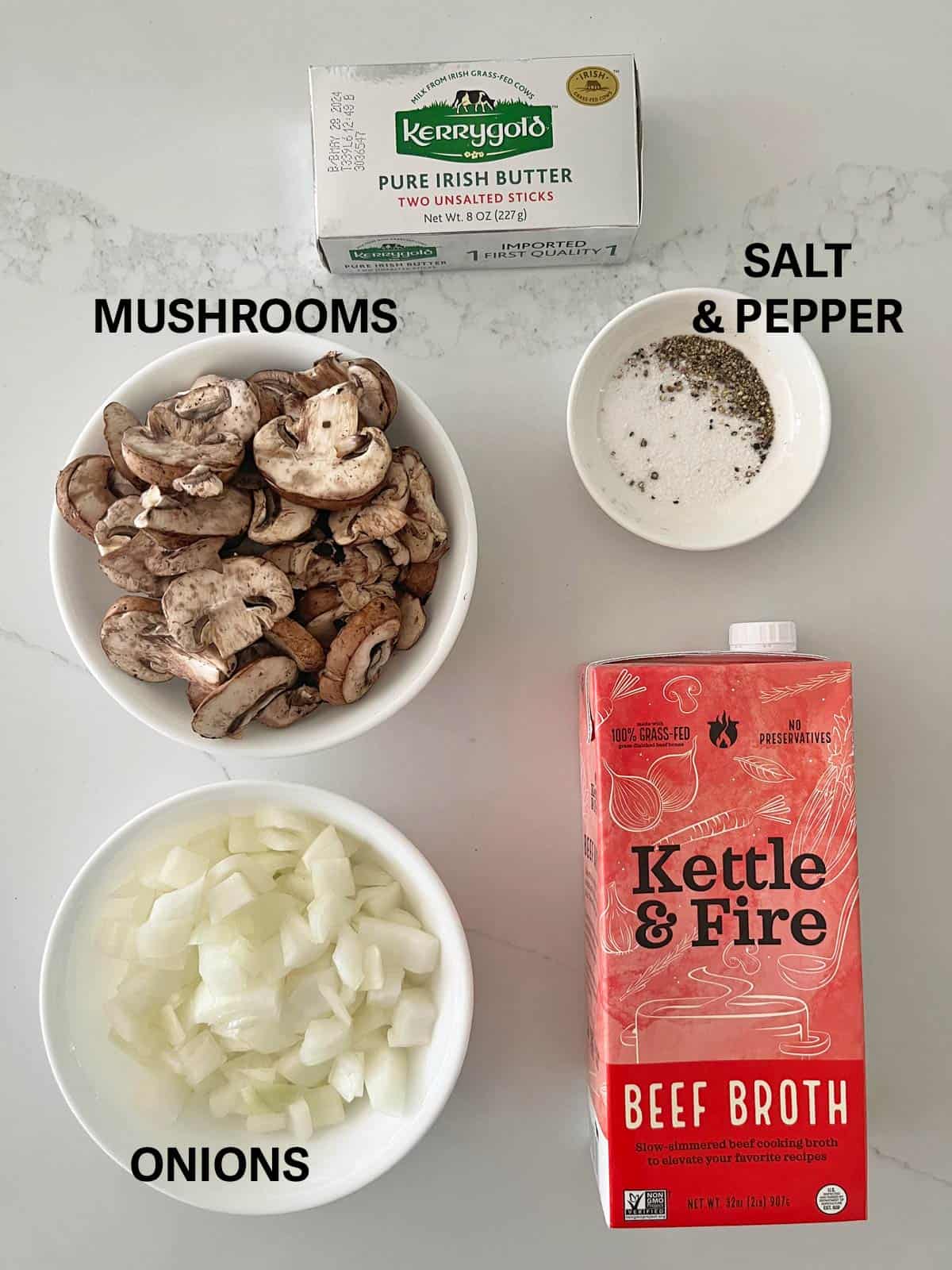
Instructions
The detailed instructions and step-by-step photos are included in the recipe card. Here's a quick overview.
Simmer the tongue in water with spices until tender for 3-4 hours, depending on its size. Allow it to slightly cool until it's easier to handle, then remove the skin and slice the tongue.
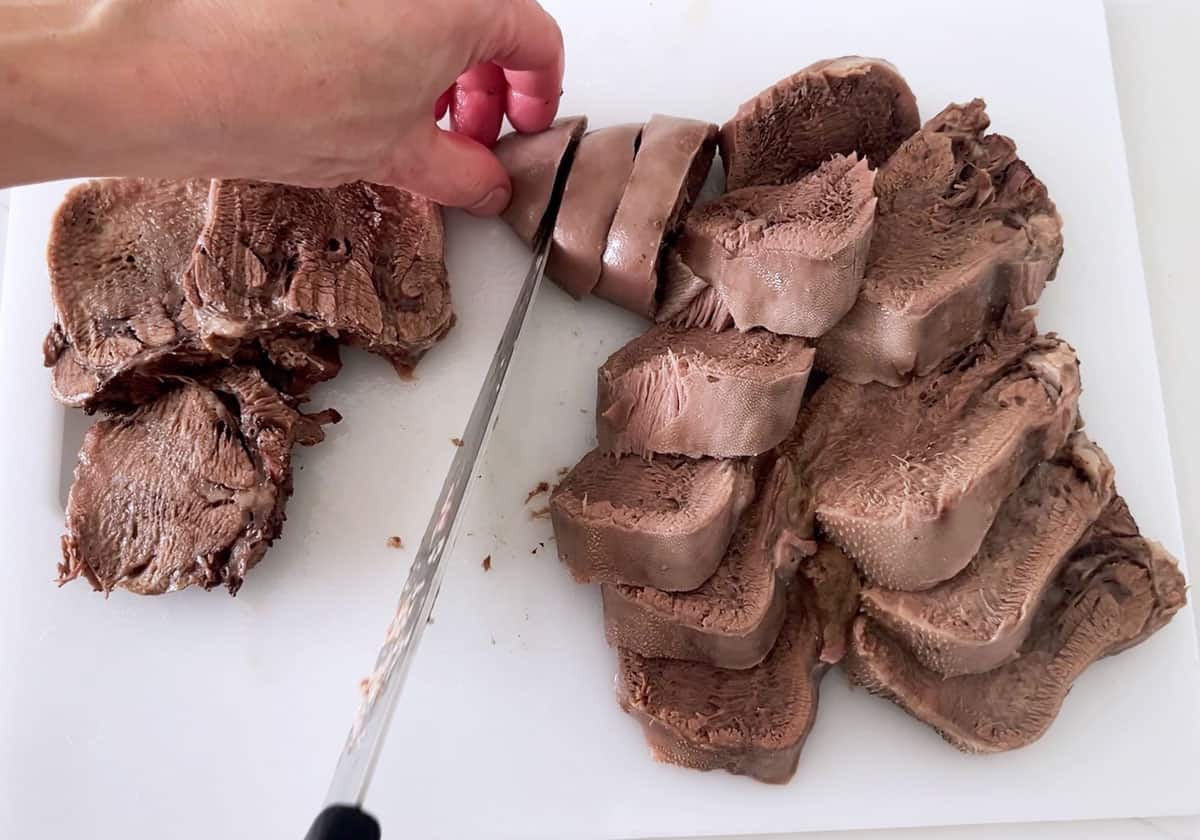
If making the sauce, cook the onions and mushrooms in butter, then add kosher salt, black pepper, and beef broth. Simmer the sauce for 20 minutes to allow the flavors to meld. Thicken the sauce with a cornstarch slurry (cornstarch mixed with cold water).

Serve the tongue topped with the sauce.

Easy recipe and instructions, turned out perfect, sauce may need a little more salt or even better add extra salt and pepper to your dish. Kids enjoyed it also, the meat turned out like brisket.
Karl
Read more comments
Recipe Tips
- You'll want to let the cooked tongue cool a little before removing the skin. It's too hot to handle when you remove it from the stockpot. However, don't let it sit and cool for too long. Remove the skin as soon as you can, as shown in the image below. If it cools down too much, it will be very difficult to remove.
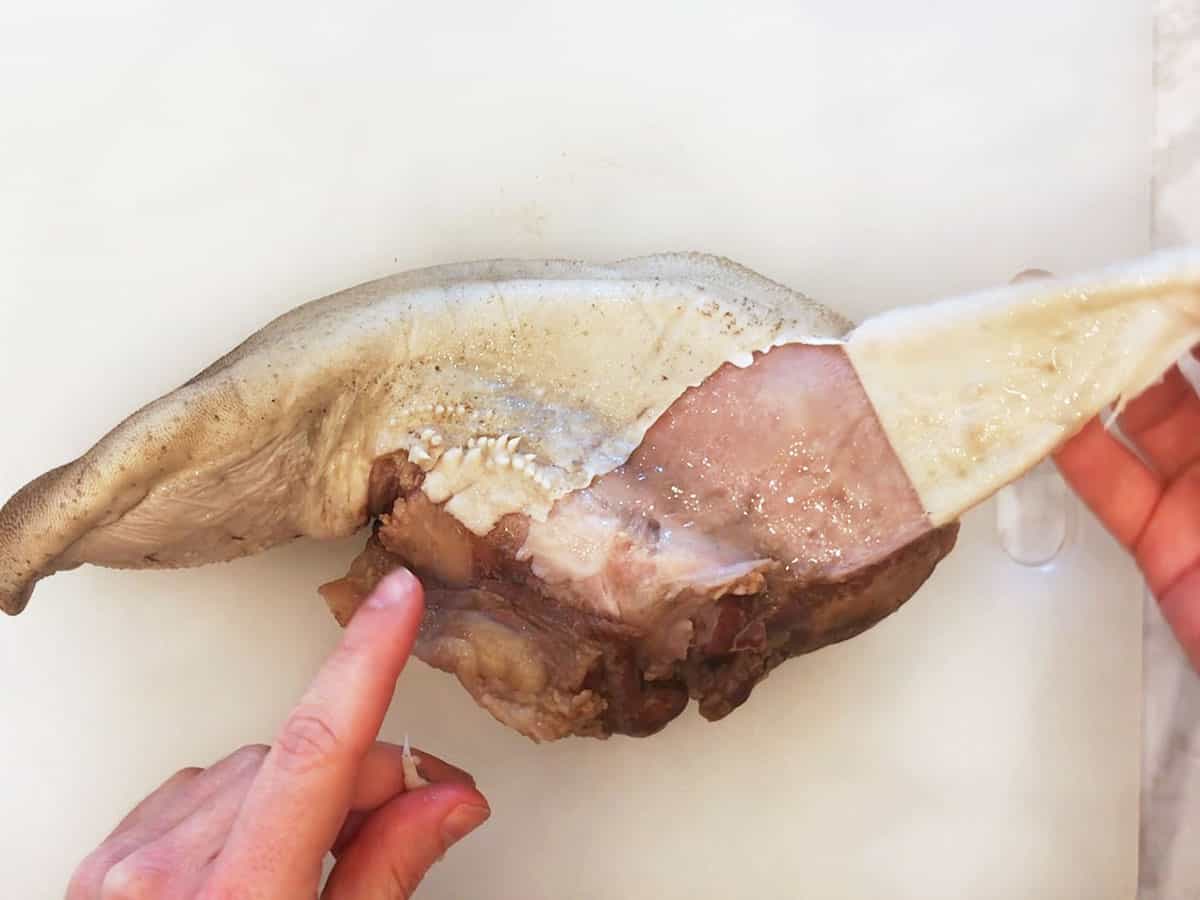
- Start preparing the sauce 30 minutes before the tongue is ready. When the sauce is ready, you can turn the heat off, cover the skillet, and keep the sauce on the still-hot burner while you tend to the tongue.
- If not using the sauce, season the tongue slices with salt to taste. I don't salt the cooking water to ensure tender meat, so the tongue slices need salt when served.
- The cooking liquid remaining in the stockpot when the tongue is ready is rich and delicious and can be strained and used as a drinking broth, as shown in the image below. Salt it to taste.
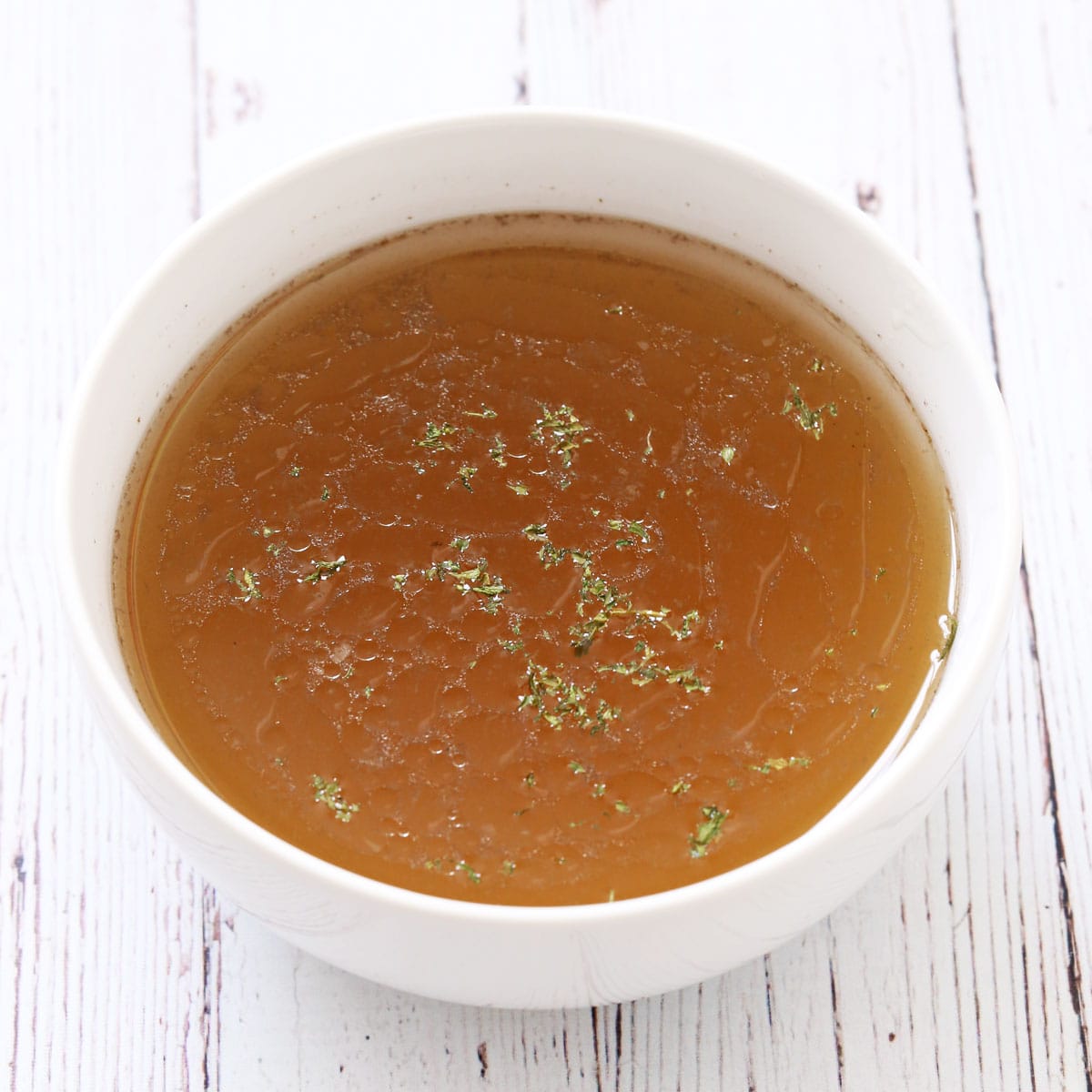
Recipe FAQs
Yes! I can see why some people find this difficult to accept. I suppose there is a certain reluctance unless you grew up eating internal organs like beef liver, beef heart, or beef cheeks.
But for someone who's used to eating the entire cow, not just steaks like New York Strip or ribeye steak, it's really no more problematic than a piece of steak. It's just meat. And it's wonderful!
In fact, as far as I know, our modern Western culture is the first human culture to shun organ meats. Eating just muscle meat is a wasteful way to consume animals.
The tongue is a muscular organ that works hard, so it's very tough when uncooked. Much like beef heart, you have two options when cooking it: slice it thinly and cook it quickly, as done in Korean barbecue, or cook it low and slow, in a stockpot or in your slow cooker.
I like the second method better because it produces meat that literally melts in your mouth - so wonderfully tender! Despite owning a slow cooker, I usually cook tongue on the stovetop because that's how my dad always did it. However, I sometimes use the slow cooker, as shown in the photo below, cooking the tongue on low for 8 hours.
These black spots are common, and there's no need to worry about them. The photo below shows them on the skin, which you will remove after cooking, so you won't eat them.
Yes. While beef broth is richer, using chicken broth is OK if that's all you have.
Serving Suggestions
You can serve beef tongue with anything you would serve with steaks or roasts. Here are a few of my favorite sides:
- Mashed cauliflower
- Roasted carrots
- Roasted asparagus
- Cauliflower steak
- Green beans almondine
- Zucchini noodles
- Steamed broccoli, as shown in the photo below.

Storing and Using the Leftovers
You can keep the leftovers in a sealed container in the fridge for 3-4 days. Reheat them covered in the microwave at 50% power. You can also freeze the cooled leftovers in a freezer bag for up to three months. Thaw them overnight in the fridge and reheat them covered in the microwave.
If you made the sauce, you can keep it in a sealed container in the fridge for up to 4 days. Reheat it gently, covered, in the microwave at 50% power. I don't recommend freezing the sauce.
While the leftovers taste great when gently reheated, my favorite way to enjoy them is cold, thinly sliced (like roast beef), with quick pickles (or pickled red onions), Dijon mustard, and veggies. Cold tongue is exceptionally creamy and buttery. See the photo below - this was a delicious lunch of cold tongue slices, mustard, cherry tomatoes, and cucumber pickles.
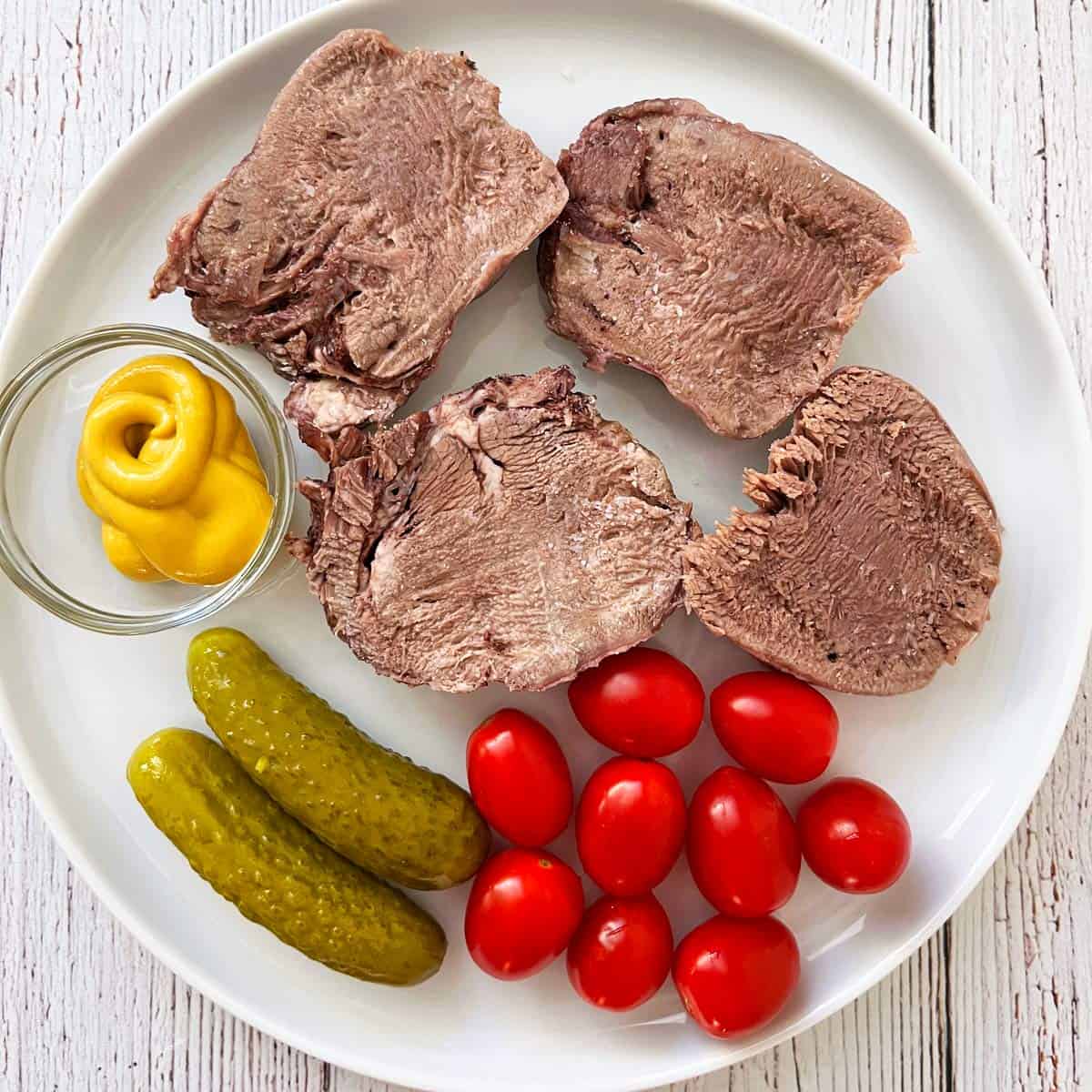
Recipe Card
Melt-In-Your-Mouth Beef Tongue
Video
Ingredients
- 1 beef tongue - 2 or 3 pounds
- 2 bay leaves
- 1 teaspoon whole peppercorns
- 1 teaspoon whole allspice
Sauce:
- 2 tablespoons butter
- 8 ounces onions - 2 medium; chopped
- 8 ounces mushrooms - sliced
- 2 cups beef broth
- 1 teaspoon Diamond Crystal kosher salt - or ½ teaspoon of any other salt, including Morton kosher salt
- ½ teaspoon black pepper
Optional but Recommended:
- 1 tablespoon cornstarch - to thicken the sauce
- 2 tablespoons parsley - chopped, for garnish
Instructions
Cook the tongue:
- Rinse the tongue and place it in a large stockpot. Add enough water to cover it completely - I typically use 14 cups of water.
- Bring the water to a boil. This should take about 20 minutes. When the water starts boiling, skim the foam off the top with a spoon. Lower the heat to a simmer. Add the bay leaves, peppercorns, and allspice.
- Cook partially covered, turning the tongue every hour with two wide spatulas to ensure even cooking on all sides. Cook 3 hours for a 2-pound tongue and 4 hours for a 3-pound tongue.
Make the sauce:
- Start making the sauce about 30 minutes before the tongue is ready. Heat the butter in a large, deep skillet over medium heat. Swirl to coat. Add the onions and cook, stirring occasionally, until golden, for about 10 minutes.
- Add the mushrooms and cook, stirring, until soft, for about 5-7 minutes. If the pan becomes too dry, add a splash of broth.
- Add salt, pepper, and beef broth. Bring to a boil over high heat. Lower the heat to a simmer, and cook, uncovered, for about 20 minutes to thicken the sauce and meld the flavors.
- Mix the cornstarch with 2 tablespoons of water. Add this slurry to the sauce and stir until the sauce thickens. Turn the heat off, cover, and keep the sauce on the warm burner while you tend to the tongue.
Finish the dish:
- Remove the cooked tongue to a cutting board. Allow it to cool for a couple of minutes until it is easier to handle, and then use your hands to peel off the skin.
- Slice the tongue.
- Arrange tongue slices on plates. If not using the sauce, sprinkle them with salt to taste (they were cooked in unsalted water to keep the meat tender). If using the sauce, spoon sauce on top of each slice, sprinkle the dish with chopped parsley, and serve.
Notes
- The nutrition info assumes a 2-pound raw tongue yielding about 1.5 pounds (24 ounces) of cooked meat. A 3-pound tongue should yield about 2 pounds of cooked meat.
- The cooking liquid is rich and delicious and can be strained and used as a drinking broth. Salt it to taste.
- Let the cooked tongue cool a little before removing the skin. It's too hot to handle when you remove it from the saucepan. But don't let it sit and cool for too long. Remove the skin as soon as you can. If it cools down too much, the skin becomes difficult to remove.
- You can keep the leftovers in a sealed container in the fridge for 3-4 days. Reheat them, covered, in the microwave at 50% power, or enjoy them cold, thinly sliced (like roast beef), with veggies, pickles, and mustard.
- You can also freeze the cooled leftovers in a freezer bag for up to three months. Thaw them overnight in the fridge and reheat them covered in the microwave.
- If you made the sauce, you can keep it in a sealed container in the fridge for up to 4 days. Reheat it gently, covered, in the microwave at 50% power. I don't recommend freezing the sauce.
Nutrition per Serving
Save this Recipe!
We will also add you to our weekly newsletter. Unsubscribe anytime. See healthyrecipesblogs.com/privacy/ to learn how we use your email.
Disclaimers
Most recipes are low-carb and gluten-free, but some are not. Recommended and linked products are not guaranteed to be gluten-free. Nutrition info is approximate. Please verify it independently. The carb count excludes non-nutritive sweeteners. Please read these Terms of Use before using any of my recipes.

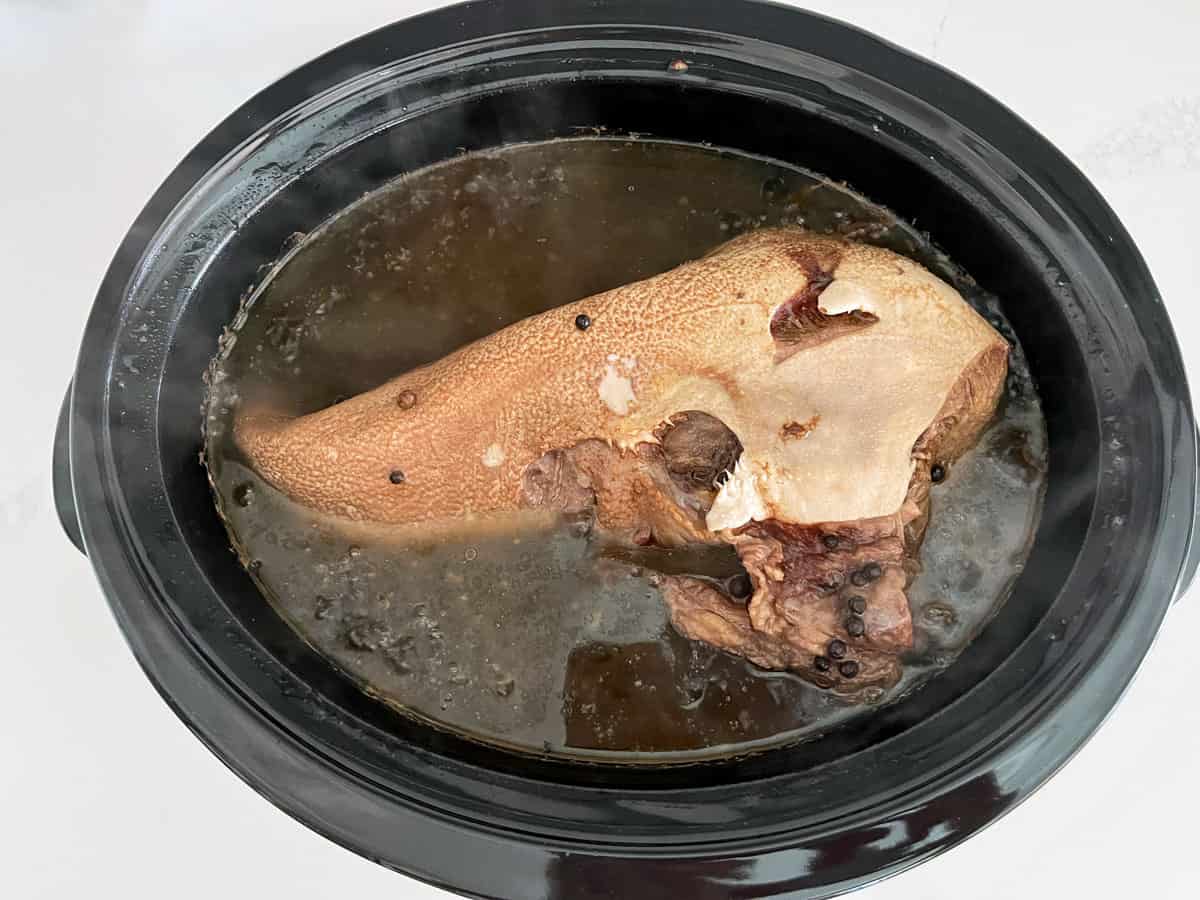


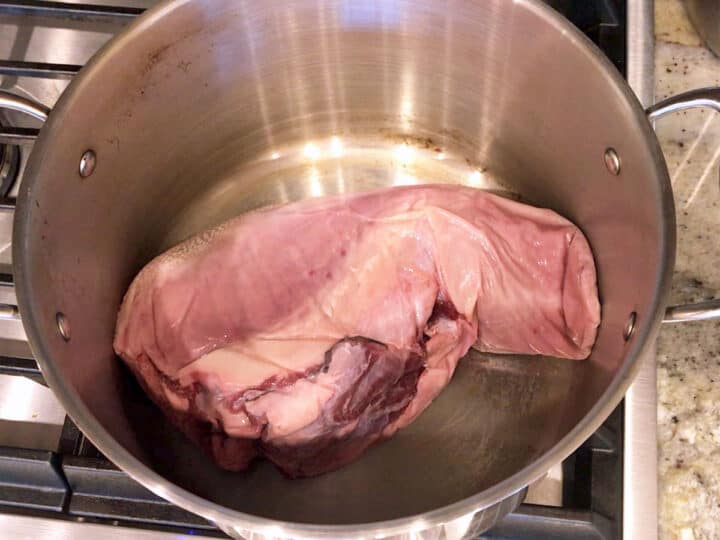












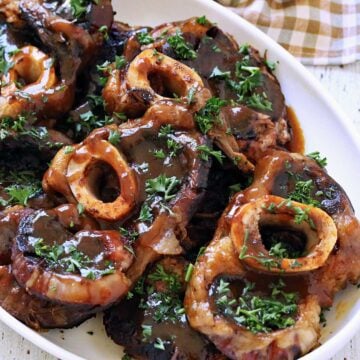
Sarah says
Wow this really takes me back. Tongue was served a lot on our family table when I grew up. It's really hard to find now though. We not only had beef tongue but lamb tongue. Now I am prepared if I can just find some tongue again.
Vered DeLeeuw says
Lamb tongues are delicious, too!